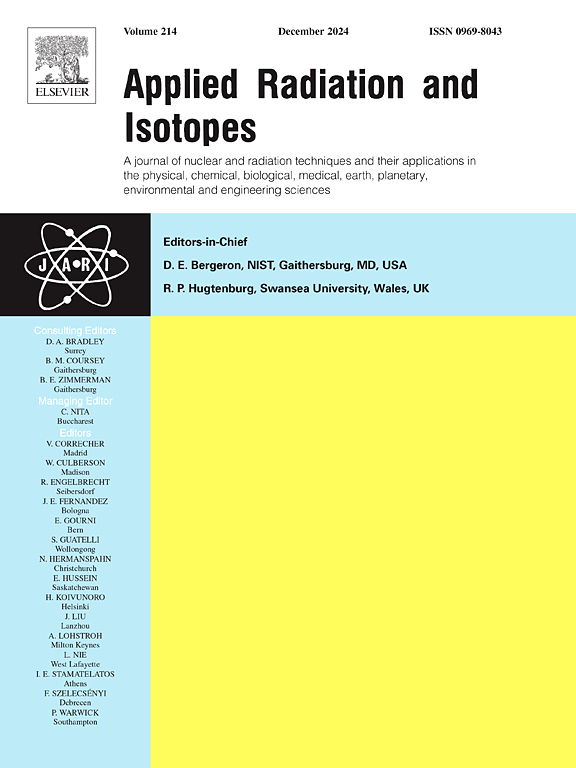Technetium-99m-labeled stealth liposomes: A new Strategy to Identify metastasis in tumour model
IF 1.6
3区 工程技术
Q3 CHEMISTRY, INORGANIC & NUCLEAR
引用次数: 0
Abstract
Objective
Stealth liposomes are useful carriers for delivering drugs to cancer sites. In this paper we describe the preparation and evaluation of 99mTc labelled stealth liposomes (PEG-Liposomes) as potential radiopharmaceuticals for SPECT imaging of cancer. This study is first to describe targeted localisation of radiolabeled stealth liposomes in tumourous cells, sparing normal cells of various organs in metastatic L1210 mouse tumour model in BDF1 mice.
Methods
Glutathione encapsulated stealth liposomes were made using lipid film hydration technique followed by probe sonication. Liposomes were radiolabeled using a lipophilic technetium complex, 99mTc-d,l-HMPAO. Labelled liposomes were purified by gel chromatography over sephadex G25 column. The tumour model was developed in immuno-competent BDF1 mice (F1DBA/2/C57-BL6 crosses) by injecting L1210 cells intraperitoneally. Biodistribution studies of the 99mTc- stealth liposomes were done in both tumour induced and normal mice. Histopathologic studies were done by excising the organs and the radioactivity in various sections was detected by autoradiography.
Results
The stealth liposomes could be synthesized as per a reported procedure and it showed similar retention factor in thin layer chromatography. Liposomes could be radiolabelled by using 99mTc-d,lHMPAO. Purification over sephadex G 25 column yielded radioachemical purity greater than 95%. Biodistribution studies and autoradiography studies showed significantly higher accumulation of 99mTc labelled stealth liposomes in liver, pancreas and ascitic fluid of the tumour induced mice as compared to normal mice.
Conclusions
99mTc labelled stealth liposomes having radiochemical purity greater than 95% could be prepared which showed higher uptake in tumour.
求助全文
约1分钟内获得全文
求助全文
来源期刊

Applied Radiation and Isotopes
工程技术-核科学技术
CiteScore
3.00
自引率
12.50%
发文量
406
审稿时长
13.5 months
期刊介绍:
Applied Radiation and Isotopes provides a high quality medium for the publication of substantial, original and scientific and technological papers on the development and peaceful application of nuclear, radiation and radionuclide techniques in chemistry, physics, biochemistry, biology, medicine, security, engineering and in the earth, planetary and environmental sciences, all including dosimetry. Nuclear techniques are defined in the broadest sense and both experimental and theoretical papers are welcome. They include the development and use of α- and β-particles, X-rays and γ-rays, neutrons and other nuclear particles and radiations from all sources, including radionuclides, synchrotron sources, cyclotrons and reactors and from the natural environment.
The journal aims to publish papers with significance to an international audience, containing substantial novelty and scientific impact. The Editors reserve the rights to reject, with or without external review, papers that do not meet these criteria.
Papers dealing with radiation processing, i.e., where radiation is used to bring about a biological, chemical or physical change in a material, should be directed to our sister journal Radiation Physics and Chemistry.
 求助内容:
求助内容: 应助结果提醒方式:
应助结果提醒方式:


